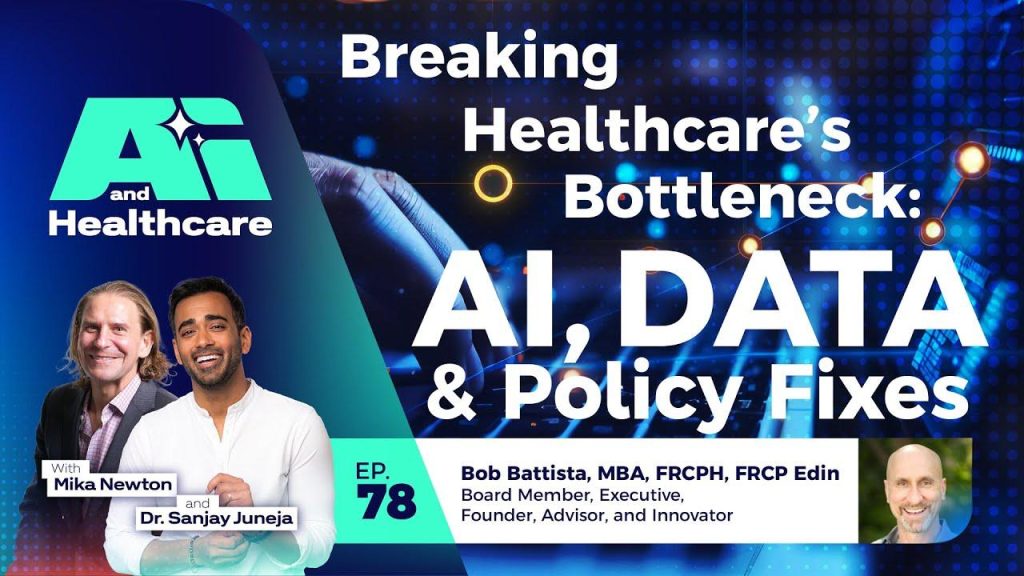In an era where technological advancements are revolutionizing healthcare, the intersection of artificial intelligence and drug development is becoming increasingly crucial. During a recent conversation, Mika Newton, a respected voice in the health technology community, welcomed Bob Battista, an expert with extensive experience in drug discovery and development. Their discussion highlighted the transformative potential of AI in learning from past medical experiences and optimizing drug repurposing strategies. Battista pointed out that while there are thousands of existing drugs that could potentially be used for different medical indications, regulatory hurdles and knowledge-sharing gaps within the pharmaceutical industry pose significant challenges. The duo delved deep into the current landscape of drug repurposing, emphasizing the need for policy innovation to unlock the potential of existing medicines and improve patient outcomes—a conversation that could reshape how the healthcare system approaches treatment options in the future.
The Role of AI in Transforming Healthcare and Drug Development
Artificial Intelligence is reshaping the healthcare landscape by enabling faster and more accurate diagnostic processes. Through advanced data analytics and pattern recognition,AI technologies can sift through vast amounts of patient data to identify conditions that may not be evident through traditional methods. Key areas benefiting from these innovations include:
- Identifying at-risk populations for proactive interventions
- Personalizing treatment plans based on genetic and environmental factors
- Streamlining administrative processes to reduce costs and improve efficiency
Additionally, machine learning algorithms are playing a pivotal role in the drug development pipeline. By analyzing historical data and modeling biological interactions, AI can predict the efficacy and safety of new compounds, thereby considerably shortening development timelines. This approach not only mitigates the risks associated with drug discovery but also encourages collaboration among stakeholders. Essential benefits include:
- Enhanced accuracy in predicting clinical trial outcomes
- Minimized financial risks for pharmaceutical companies
- Accelerated timelines for bringing innovative therapies to market
Overcoming Regulatory Hurdles in Drug Repurposing
Regulatory frameworks often lag behind rapid advancements in drug repurposing,creating barriers that slow down innovation. The traditional approval processes can be cumbersome and do not always account for the speed with which AI can identify new therapeutic uses for existing compounds. To enhance the speed of drug approval, policymakers must consider adapting regulations that facilitate a more dynamic approach to evidence gathering and sharing. Such adjustments could include:
- Streamlined pathways for repurposed drugs demonstrating safety and efficacy based on real-world data.
- Expanded collaborative networks that include startups, academic institutions, and established pharmaceutical companies.
- Incentives for companies willing to explore new indications for older drugs, promoting a culture of innovation.
Moreover, fostering interdisciplinary dialog between regulatory agencies and tech developers can cultivate a nuanced understanding of both clinical and technological landscapes. Incorporating AI into this exchange can illuminate data-driven insights that support decision-making processes.To further this goal, the following actions are crucial:
- Regular stakeholder meetings to discuss emerging technologies and their potential regulatory implications.
- Public consultations that allow patient voices to inform drug approval criteria.
- Funding for pilot programs that test regulatory flexibility in real-world scenarios.
Leveraging Knowledge Sharing Between Industries for Innovation
Innovative ecosystems thrive when industries converge and share insights. In healthcare, the collaboration with sectors such as technology and manufacturing can accelerate advancements in medical devices and treatment regimes. By leveraging cross-industry knowledge, healthcare professionals can adopt best practices from other fields to refine operational protocols and enhance patient experience. Examples include:
- Implementing agile methodologies from tech to streamline project management in clinical trials.
- Utilizing supply chain efficiencies from manufacturing to optimize medical supply distribution.
- Adopting principles from consumer tech to improve user interface design in health apps, ensuring better patient engagement.
Moreover, partnerships between healthcare innovators and tech companies could lead to the development of groundbreaking predictive analytics tools that anticipate patient needs. This synergy can allow for a more tailored approach to treatment, addressing individual patient profiles through data-driven insights. Critical areas for collaboration might include:
- Joint research initiatives focused on integrating AI in personalized medicine.
- Shared platforms for real-time data exchange to enhance decision-making processes.
- Collaborative funding models that support experimental therapy development across industries.
Recommendations for Policy Changes to Accelerate Drug Approvals
To expedite the drug approval process, it is essential to implement regulatory reforms that prioritize agility and responsiveness to new scientific developments. One approach could involve establishing adaptive approval pathways specifically designed for drugs that have evidenced safety and efficacy through alternative data sources. Such pathways would enable a quicker transition from research to the market while ensuring ongoing surveillance post-approval, facilitating early access for patients in need.Policymakers should also consider fostering collaboration with data-sharing platforms to harness collective insights from diverse healthcare stakeholders, which can enhance the decision-making process and allow for rapid iterations based on real-world outcomes.
Additionally, to stimulate innovation within the pharmaceutical landscape, creating incentives for partnerships between small biotech firms and large pharmaceutical companies may prove vital.This can include tax credits for collaborative projects focusing on drug repurposing, along with grants dedicated to research exploring neglected diseases. Emphasizing a multidisciplinary approach, wherein biotechnologists collaborate with regulatory experts and practitioners from various domains, can facilitate a well-rounded understanding of rapidly evolving therapeutic landscapes. Such initiatives can encourage the exploration of previously overlooked compounds, ultimately expediting the delivery of effective medications to patients in a timely manner.























